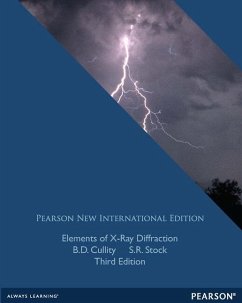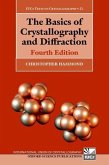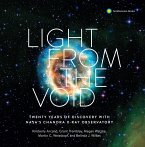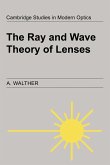Designed for Junior/Senior undergraduate courses. This revision of a classical text is intended to acquaint the reader, who has no prior knowledge of the subject, with the theory of x-ray diffraction, the experimental methods involved, and the main applications. The text is a collection of principles and methods designed directly for the student and not a reference tool for the advanced reader
Features + Benefits
No metallurgical data are given beyond that necessary to illustrate the diffraction methods involved.
X-ray diffraction is stressed rather than metallurgy.
The book is divided into three main parts—Fundamentals; experimental methods; and applications.
The subject of crystal structure is approached through, and, based on, the concept of the point lattice (Bravais lattice), because the point lattice of a substance is so closely related to its diffraction pattern.
The book is written entirely in terms of the Bragg law and can be read without any knowledge of the reciprocal lattice.
1. Properties of X-rays.
2. Geometry of Crystals.
3. Diffraction I: Directions of Diffracted Beams.
4. Diffraction II: Intensities of Diffracted Beams.
5. Diffraction III: Non-Ideal Samples.
6. Laure Photographs.
7. Powder Photographs.
8. Diffractometer and Spectrometer.
9. Orientation and Quality of Single Crystals.
10. Structure of Polycrystalline Aggregates.
11. Determination of Crystal Structure.
12. Precise Parameter Measurements.
13. Phase-Diagram Determination.
14. Order-Disorder Transformation.
15. Chemical Analysis of X-ray Diffraction.
16. Chemical Analysis by X-ray Spectrometry.
17. Measurements of Residual Stress.
18. Polymers.
19. Small Angle Scatters.
20. Transmission Electron Microscope.
Features + Benefits
No metallurgical data are given beyond that necessary to illustrate the diffraction methods involved.
X-ray diffraction is stressed rather than metallurgy.
The book is divided into three main parts—Fundamentals; experimental methods; and applications.
The subject of crystal structure is approached through, and, based on, the concept of the point lattice (Bravais lattice), because the point lattice of a substance is so closely related to its diffraction pattern.
The book is written entirely in terms of the Bragg law and can be read without any knowledge of the reciprocal lattice.
1. Properties of X-rays.
2. Geometry of Crystals.
3. Diffraction I: Directions of Diffracted Beams.
4. Diffraction II: Intensities of Diffracted Beams.
5. Diffraction III: Non-Ideal Samples.
6. Laure Photographs.
7. Powder Photographs.
8. Diffractometer and Spectrometer.
9. Orientation and Quality of Single Crystals.
10. Structure of Polycrystalline Aggregates.
11. Determination of Crystal Structure.
12. Precise Parameter Measurements.
13. Phase-Diagram Determination.
14. Order-Disorder Transformation.
15. Chemical Analysis of X-ray Diffraction.
16. Chemical Analysis by X-ray Spectrometry.
17. Measurements of Residual Stress.
18. Polymers.
19. Small Angle Scatters.
20. Transmission Electron Microscope.








